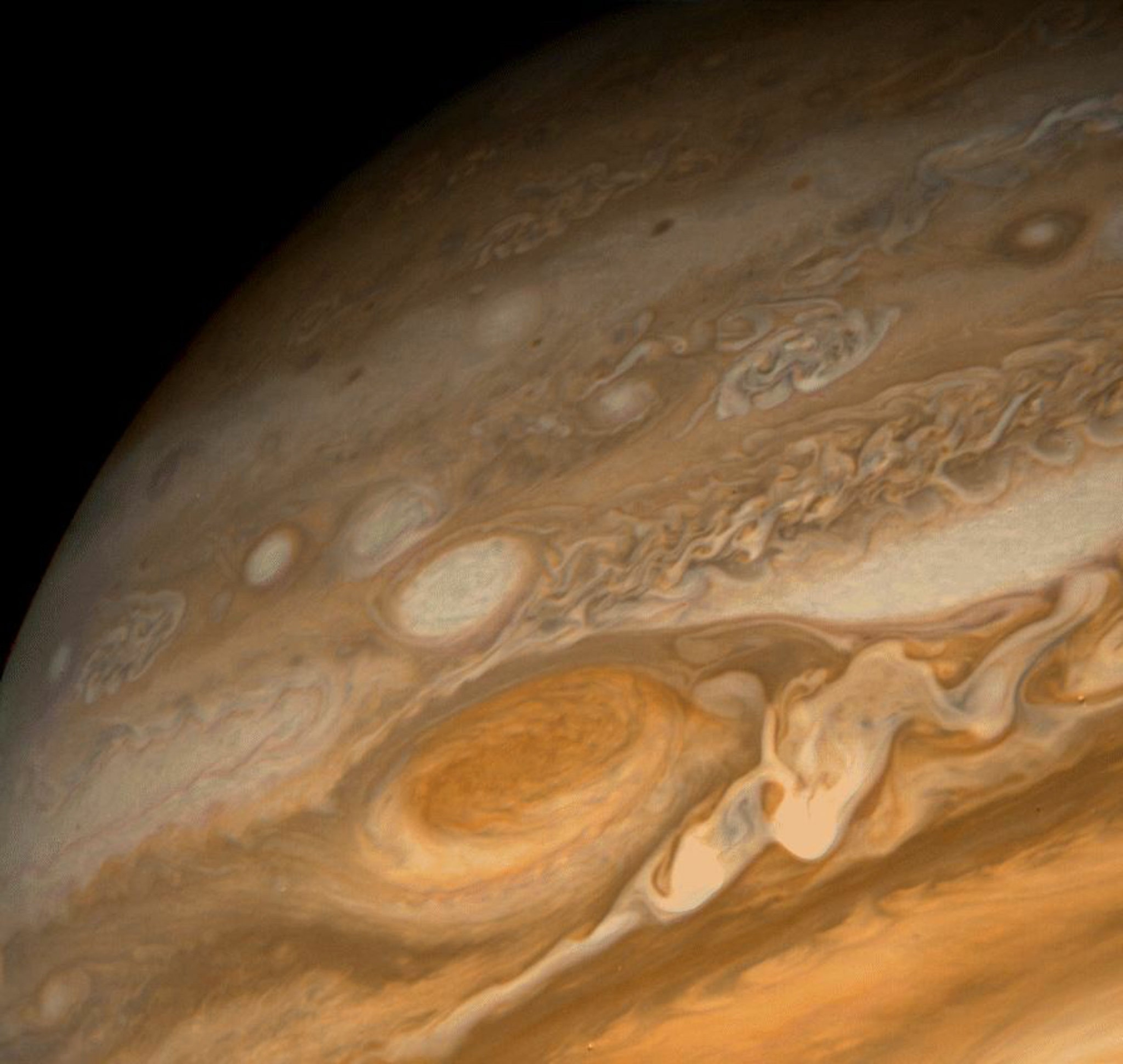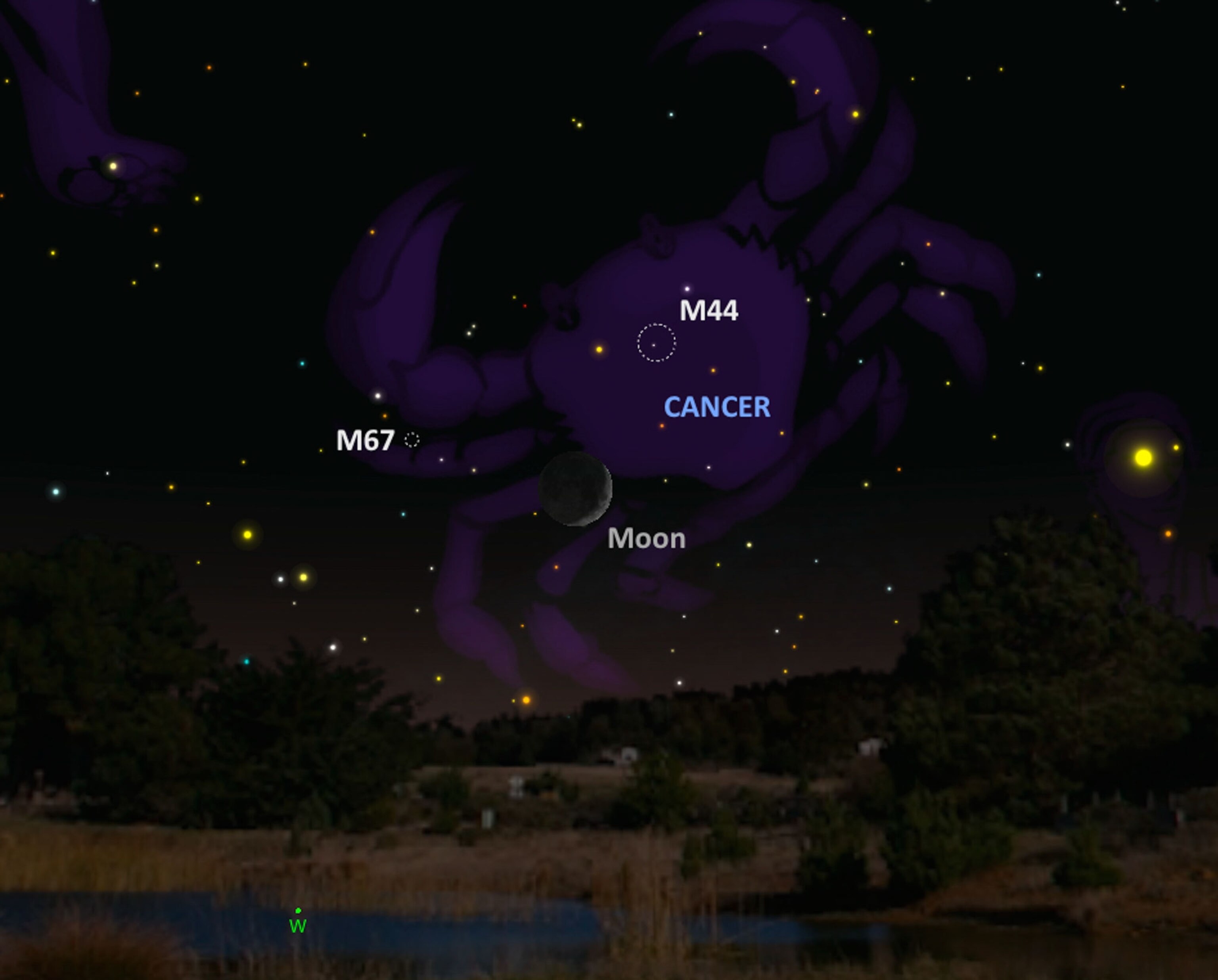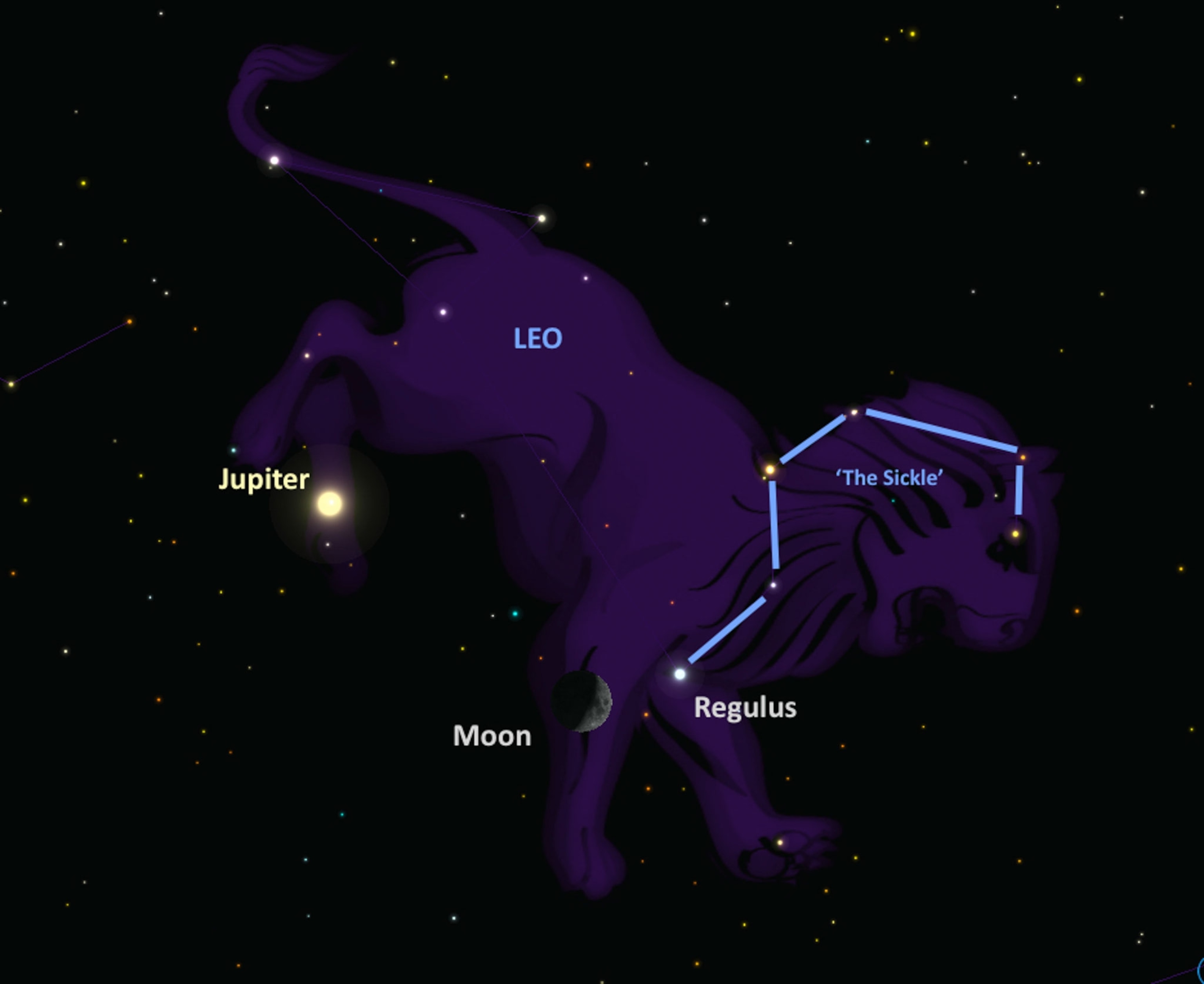
This Week’s Night Sky: See Jupiter’s Colorful Clouds
Also, look out for swarming star clusters and the shining heart of the constellation Leo.
Cluster Sandwich. A great observing challenge will present itself on June 8 as darkness falls. Look for the waxing crescent moon low in the western sky and, using binoculars, hunt down two pretty star clusters pinned above it. Even using modest magnification, you should be able to see amazing details in both of these bright stellar groups.
The more dramatic open star cluster to the upper right of the moon is known as M44, or the Beehive. It was first noticed with the naked eye in ancient Greece by the poet Araros in 260 B.C. and later by the astronomer Hipparchus in 130 B.C. Today, under pristine dark skies far from any light pollution, the 600-light-year-distant Beehive can be glimpsed without any optical aid.

On the moon’s left side, look for a fainter but still pretty open cluster known as Messier 67. It lies just over 3,000 light-years from Earth and spans about the same width as the full moon in the sky, making M67 a perfect target for binoculars and small telescopes. Both clusters will be competing with the glare of the moon, but by the next night they will shine much brighter as the moon sinks closer to the horizon.

Lion’s Heart. About an hour after sunset on June 10, look for the waxing crescent moon higher in the southwestern sky parked beside Regulus, the lead star in the constellation Leo, the lion. The two objects will be about five degrees apart, or roughly the same width as your three middle fingers held at arm’s length.
Leo is one of the most recognizable and ancient star patterns in the sky—the leonine constellation can be found recorded on Babylonian clay tablets dating back as far as 1,000 B.C. Regulus represents the heart of the mythical beast and forms the base of a giant sickle or backward question mark made up of other bright naked-eye stars.
Jovian Meeting. By June 11, the first quarter moon will be having a close encounter with the king of all planets in our solar system, Jupiter.
While Jupiter is 11 times wider than Earth, it sits about 505 million miles (814 million kilometers) away and so will look like a super-bright star next to the moon. But gaze at the gas giant planet through a small backyard telescope and you can watch the colorful cloud belts and oval-shaped storms rotate across its surface.
This past week, astronomers released a new study that explains how they used giant radio telescopes to penetrate Jupiter’s thick clouds and examine its deeper atmosphere. The detailed radio map, created using the Very Large Array (VLA) in New Mexico, will enable scientists to learn more about how Jupiter’s distinctive cloud formations are powered by the planet's internal heat source.
Clear skies!
Andrew Fazekas, the Night Sky Guy, is the author of Star Trek: The Official Guide to Our Universe. Follow him on Twitter, Facebook, and his website.





